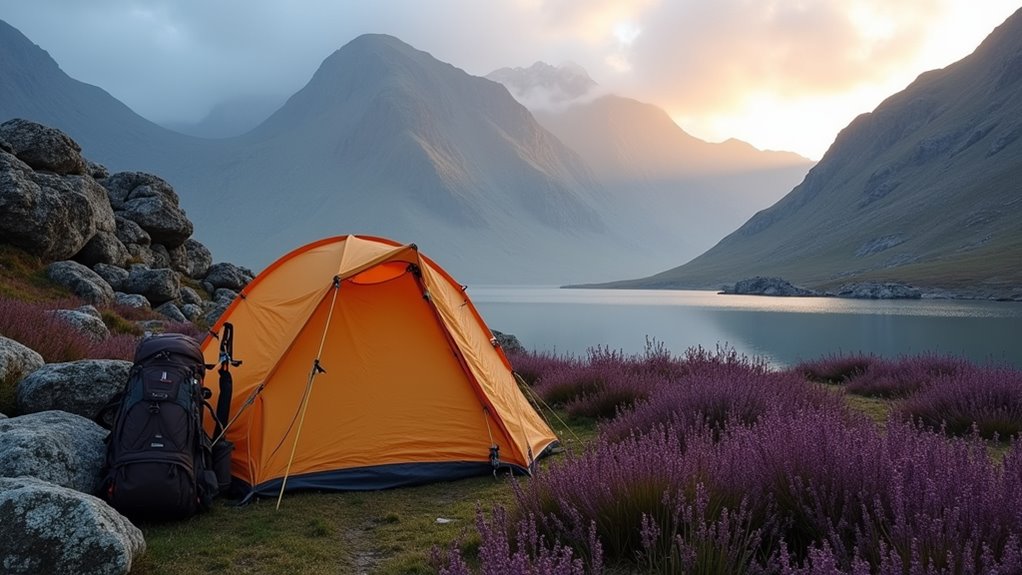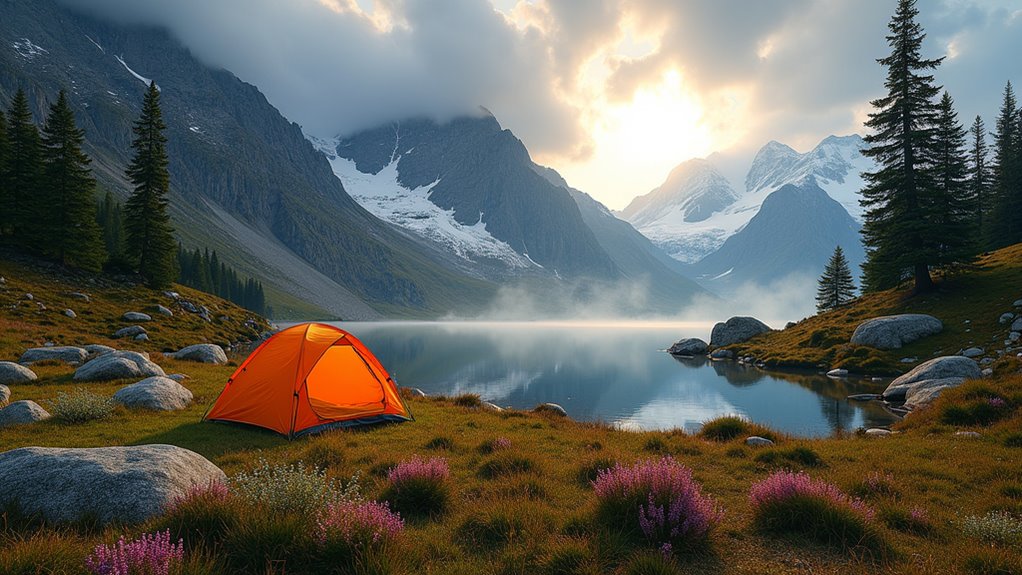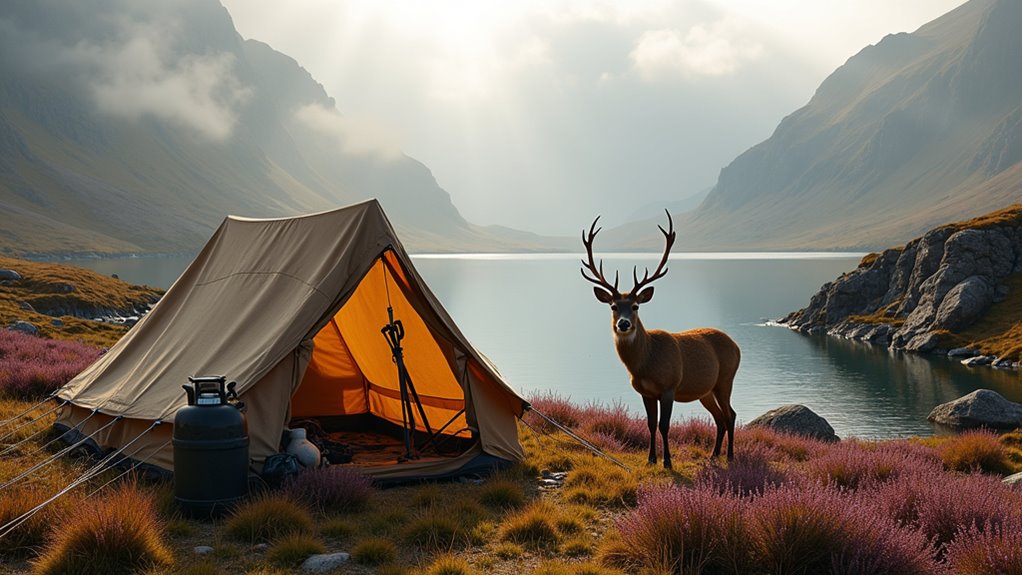Physical Address
304 North Cardinal St.
Dorchester Center, MA 02124
Physical Address
304 North Cardinal St.
Dorchester Center, MA 02124

From midnight sun to aurora skies, Scotland's Right to Roam laws enable year-round Highland camping—but most adventurers make one critical mistake.
Did you know that Scotland’s “Right to Roam” laws make it one of the few places in Europe where you can legally pitch your tent almost anywhere? You’ll find the Scottish Highlands beckon adventurers in every season, from July’s midnight sun casting golden light over Ben Nevis to January’s aurora-painted skies above frozen lochs. But there’s a vital difference between surviving Highland weather and truly thriving in it—and it all comes down to understanding what most campers get completely wrong.

While many countries restrict where you can pitch a tent, Scotland’s progressive “right to roam” legislation sets it apart as one of Europe’s most camping-friendly destinations.
The Land Reform Act grants you legal access to most uncultivated land, including mountains, moorland, and forests. You can wild camp almost anywhere, but you must follow the Scottish Outdoor Access Code‘s core principle: leave no trace.
Pitch your tent away from buildings, roads, and cultivated fields. You can’t camp in large groups without landowner permission, and motorized camping isn’t allowed.
National parks may have additional restrictions during peak seasons.
This freedom comes with responsibility. Scots have cultivated this camping culture for generations, trusting visitors to respect their landscape. Pack out all waste, use biodegradable soap, and camp only one or two nights per spot. First-time campers should familiarize themselves with basic outdoor skills before venturing into Scotland’s wilderness areas.
Because Highland weather can shift from brilliant sunshine to sideways rain within minutes, your gear selection becomes critical to both comfort and safety. You’ll need equipment that handles Scotland’s notorious “four seasons in one day” phenomenon while remaining lightweight enough for rugged terrain.
Locals say there’s no bad weather, only inappropriate clothing – and they’re absolutely right. Your gear must perform when Highland conditions turn nasty:
While Highland camping presents unique challenges, many of the same gear principles apply whether you’re facing Scottish storms or scorching desert heat.

When you’re scouting Highland camping spots, you’ll discover that Scotland’s most spectacular wilderness areas offer everything from dramatic coastlines to ancient forest glens – each with its own character and camping regulations.
The Cairngorms National Park delivers mountain camping with established sites near Aviemore, while wild camping’s permitted above 500 meters. You’ll find excellent facilities at Rothiemurchus Estate, where red deer often graze nearby at dawn.
Head west to Glen Coe for breathtaking valley camping, though weather changes rapidly here.
The shores of Loch Katrine offer gentler conditions with stunning reflections.
For coastal experiences, try the Isle of Skye‘s designated areas near Portree, or venture to remote Applecross Peninsula where you’ll camp alongside local crofters’ sheep.
Always respect Scotland’s Right to Roam principles.
Given the remote nature of many Highland locations, investing in reliable water purifiers becomes crucial for extended stays where natural water sources may require treatment before consumption.
Although Scotland’s Highlands offer year-round camping opportunities, each season brings distinct challenges and rewards that’ll shape your entire outdoor experience. You’ll need to prepare differently for each period, understanding how weather patterns affect accessibility and safety.
Summer delivers long daylight hours but crowded popular spots, while winter transforms the landscape into a stunning but demanding environment requiring specialized gear. Spring and autumn offer balanced conditions with fewer travelers but unpredictable weather.
Essential seasonal preparations include:
Winter camping in particular demands careful attention to ski accessories that can double as essential cold-weather gear for Highland adventures.

While the Scottish Highlands may not harbor the dangerous predators found in other wilderness areas, you’ll still encounter fascinating wildlife that demands respect and proper precautions.
Red deer are magnificent but can be aggressive during rutting season (September-October), so maintain distance and avoid sudden movements.
Highland cattle, though docile-looking, deserve wide berth—they’re protective mothers with impressive horns.
Adders, Scotland’s only venomous snake, rarely bite but stick to marked paths and wear proper boots.
Midges present the biggest nuisance from May through September; pack quality repellent and head nets.
Store food securely to avoid attracting ravens, foxes, and pine martens—these clever creatures will raid unsecured campsites.
When planning your Highland camping meals, consider beach camping food options that travel well and require minimal preparation in Scotland’s unpredictable weather.
Respect nesting birds, especially during breeding season (April-July), and you’ll enjoy Scotland’s wildlife safely.
Since Scotland’s wilderness belongs to everyone, you’ll want to practice Leave No Trace principles with extra care in this culturally rich landscape. The Scottish Right to Roam grants access but comes with responsibility to preserve these ancient lands for future generations.
Scotland’s Right to Roam comes with a sacred duty to protect these ancient landscapes for those who follow.
Respect Highland traditions while minimizing your impact:
Planning family camping activities that align with Leave No Trace principles helps engage all ages while protecting Scotland’s pristine wilderness.
You’re camping in a landscape shaped by centuries of history, so treat it with the reverence it deserves.
You’ve got the keys to Scotland’s magnificent Highland kingdom—now it’s time to open your adventure. Whether you’re pitching your tent under summer’s midnight sun or winter’s starlit sky, the Highlands don’t just offer camping; they offer transformation. Pack your four-season gear, respect the ancient landscape, and embrace Scotland’s generous Right to Roam. The mountains are calling, and you’re ready to answer with confidence, preparation, and respect for this wild, welcoming land.